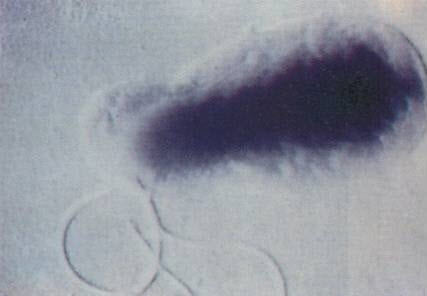| Apocrine glands are the major type of sweat glands in dogs. These glands are made up of a mass of secretory tubules and an excretory duct that opens into a hair follicle. The glands are located in the subcutaneous fat deep in the dermis. Apocrine glands are a source of common tumors in many breeds of dogs. The majority of these tumors are benign, but there are some that are malignant and can be very aggressive. Along with the presence of the malignancy lies the potential of metastasis to the lungs and regional lymph nodes. Depending on their location, they are classified as glandular (arising from the gland) and ductular (arising from the ducts). Malignant tumors are generally seen in older dogs. |
Types
Apocrine adenomas – These lumps or soft bulges above the skins mostly arise on the head and neck which a higher incidence between 8-11 years. They grow slowly and there is no chance or recurrence following surgical extirpation.
Apocrine ductal adenoma – These tumors develop on the head, thorax, abdomen and back and occur in the age group of 6-11 years. These tumors are slow growing.
Ceruminous adenomas – These tumors around found within the ear canal and also the vertical ear canal and occur in the age group of 4-13 years. They tend to grow outward and ulceration and secondary infection are common. They are non-malignant and are slow growing, but they cannot be surgically excised.
Anal sac gland carcinoma – This is a malignant tumor found in the wall of the anal sac and is quite common in dogs, common in the age group 5-15 years.
Apocrine ductal adenoma – These tumors develop on the head, thorax, abdomen and back and occur in the age group of 6-11 years. These tumors are slow growing.
Ceruminous adenomas – These tumors around found within the ear canal and also the vertical ear canal and occur in the age group of 4-13 years. They tend to grow outward and ulceration and secondary infection are common. They are non-malignant and are slow growing, but they cannot be surgically excised.
Anal sac gland carcinoma – This is a malignant tumor found in the wall of the anal sac and is quite common in dogs, common in the age group 5-15 years.
Diagnosis
Diagnostic techniques consist of a fine needle aspiration for microscopic examination of cell samples (cytology). The examination of a biopsy (histopathology) offers a better diagnosis. This information helps in determining the prognosis and a course of action for treatment. A biopsy also rules out the presence of other cancers.
Treatment
The treatment of choice for sweat gland and ceruminous gland adenocarcinomas is complete surgical excision. If it a tumor of the ear canal, complete ear removal may be necessary. If the tissue around the incision is free of tumor cells, no additional treatment is required. If surgical removal is not possible, your veterinarian may opt for curative-intent radiation therapy since most of these tumors respond well to radiotherapy.


 RSS Feed
RSS Feed